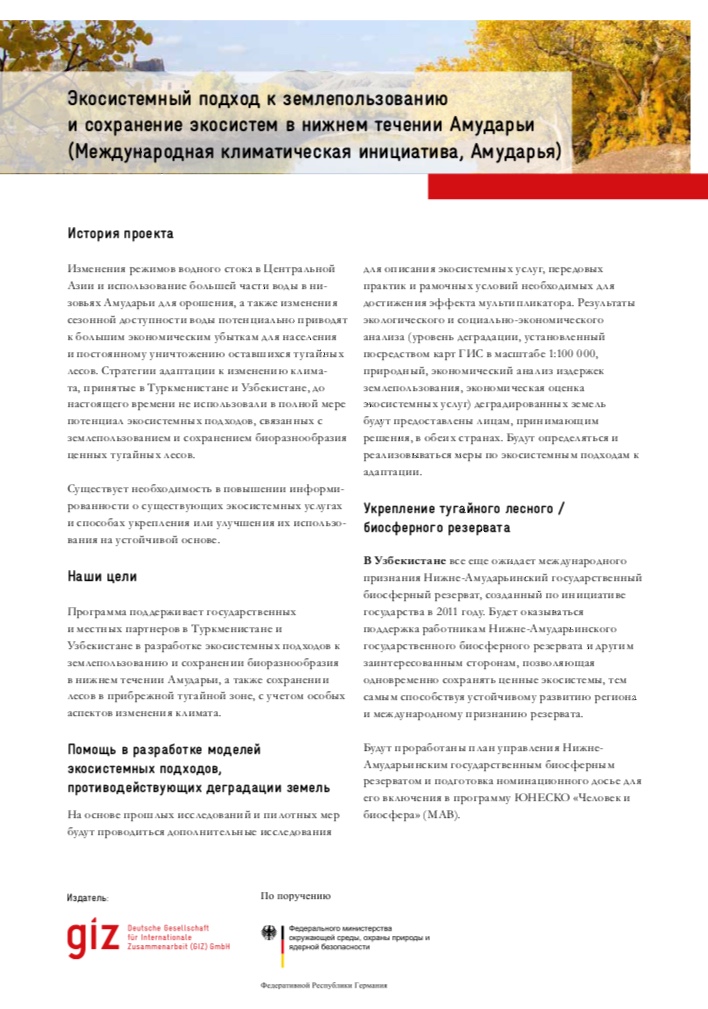Ecosystem Based Land Use and Ecosystems Conservation along the Lower reaches of Amu Darya (IKI Amu Darya)
Background of the project
Changes in water flow regimes in Central Asia and using most of the water in the Amu Darya downstream section for irrigation, also changes in seasonal water availability potentially result in massive economic losses for the population and progressive destruction of the remaining Tugai forests. The strategies for climate change adaptation adopted by Turkmenistan and Uzbekistan have up to now not made full use of the potential of ecosystem based approaches related to land use and protecting the valuable Tugai forest biodiversity.
There is need for raising awareness regarding existing ecosystem services and the way of reinforcing or making better use of those, in a sustainable manner.
Our objectives
The program supports the governmental and local partners in Turkmenistan and Uzbekistan in the development of Ecosystem-based Approaches in land use and biodiversity conservation in the lower reaches of Amu Darya, as well as in the conservation of forests in the ripairian Tugai zone, with special climate change aspects.
Assistance in the development of EbA models countering land degradation
Based on past studies and pilot measures further analysis will be carried out describing ecosystem services, best practices and framework conditions conducive to achieve a multiplier effect. Environmental and socio-economic analysis (level of degradation established through GIS maps 1:100 000, environmental economic and costs analysis of land use, economic valuation of ecosystem services) of degraded land will be made available to decision makers in both countries. Ecosystem-based adaptation measures will be identified and implementation initiated.
Tugai Forest/ (Biosphere) reserve strengthening
In Uzbekistan the Lower Amu Darya State Biosphere Reserve (LABR) formed in 2011 at the initiative of the Government is still pending international recognition. Employees from the Lower Amu Darya Biosphere Reserve and other relevant stakeholders will be supported by allowing simultaneously preserving valuable ecosystems, thus contributing to the region sustainable development and international recognition of the reserve.
An adapted management plan for the LABR and the preparation of the nomination dossier for the recognition by UNESCO Program “Man and the Biosphere” (MAB) will be elaborated.
In Turkmenistan, advice will be provided in the form of recommendations on land use planning and grazing, while preserving natural resources along the Amu Darya.
Expected Results
The land use opportunity cost of Forest Ecosystems compared to agriculture will be analyzed providing decision makers with relevant information. The pressure on the Tugai ecosystems will be decreased contributing to their resilience. The improved capacity among local and national actors and the achieved results of the project will raise the commitment to introduce and spread ecosystem based approaches.
The partners will be able to independently identify and implement cost-efficient and climate-smart land use and biodiversity conservation measures and to incorporate them into national climate change adaptation strategies as well as in regional and international discussions.
